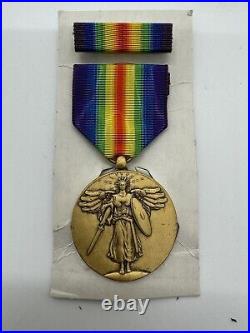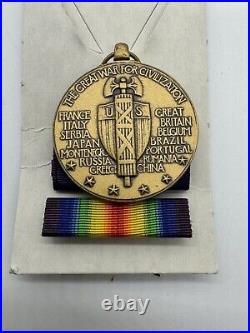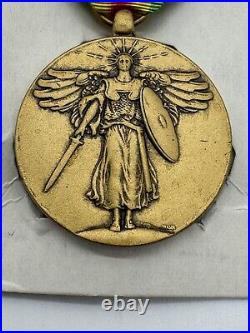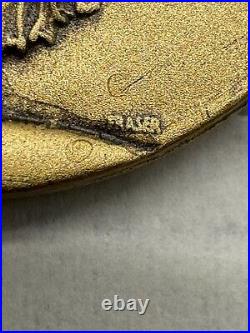



James Earle Fraser, a prominent sculptor, designed the World War I Victory Medal in 1919. The medal was awarded to soldiers who served between 1917 and 1918, and to those who served in Russia or Siberia between 1918 and 1920. Here are some details about the medal. The medal’s front features Winged Victory with a sword and shield, while the back shows an American shield with the fasces, a medieval battle axe, and the names of allied countries. The medal hangs from a silk ribbon that represents two rainbows, with red in the middle. Battle clasps were awarded for major operations, and were worn on the ribbon. For example, a medal with the bars “Ypres Lys”, St. Mihiel”, “Defensive Sector”, and “Meuse-Argonne indicates that the soldier fought in those battles. Fraser was a member of the Commission of Fine Arts (CFA) that oversaw the design of the medal. He was also the designer of the “buffalo” nickel, the Benjamin Franklin Memorial, and the pediment of the National Archives building. The CFA oversaw the design of the 1919 American World War I Victory Medal, designed by CFA member James Earle Fraser. The obverse features Winged Victory wielding a sword and shield; the reverse depicts the ancient Roman symbol of authority, the fasces, overlaid on an American heraldic shield with adjacent inscriptions citing the allied countries. The CFA’s role in the review of medals was formalized in 1921 by executive order.